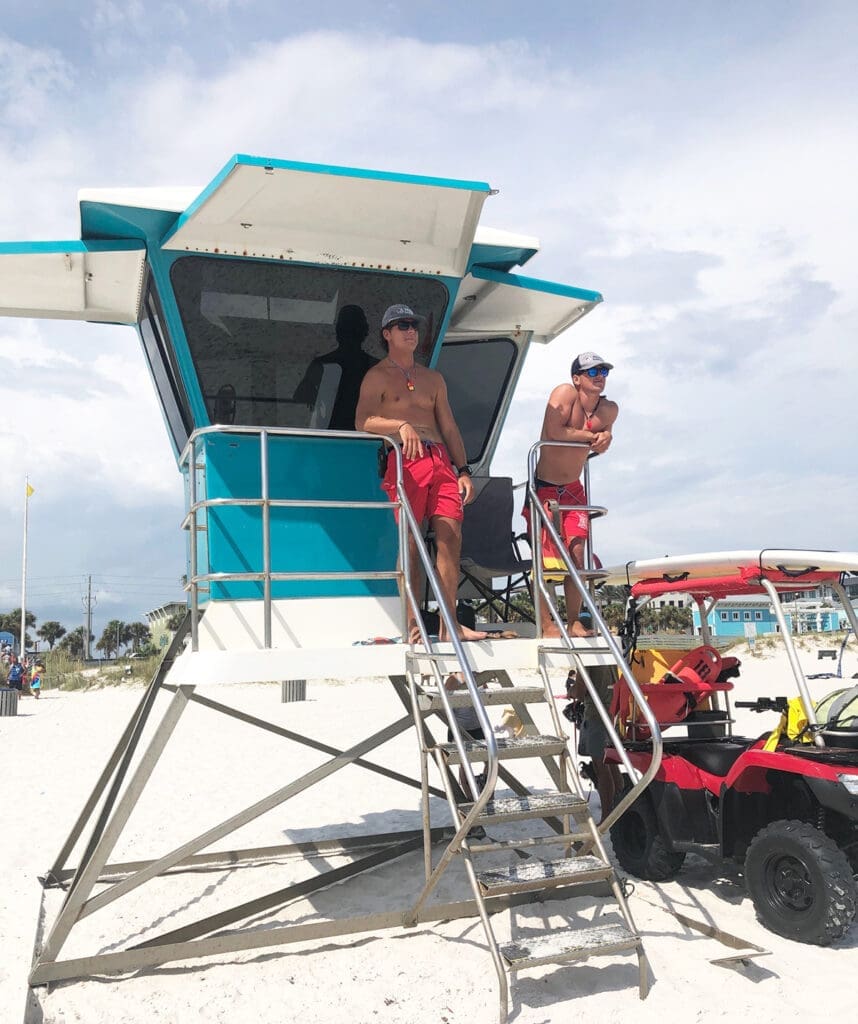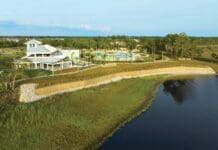By Ed Offley
Reacting to a spike in drowning incidents in the Gulf of Mexico during a four-day period in June, both Panama City Beach and the Bay County Tourist Development Council (TDC) have taken emergency action to shore up the city’s Beach Rescue program.
 Between June 20 and 23, six tourists drowned after becoming caught in rip currents, including three young Alabama residents who went for an evening swim on June 21 and were swept out into deep water. Prior to that, the only fatality of 2024 had occurred back on March 27. Three fatalities occurred within the city limits, while four — including the triple drowning — were along the Bay County shoreline. The fatalities mirrored a similar surge in drownings in 2023, where eight people died.
Between June 20 and 23, six tourists drowned after becoming caught in rip currents, including three young Alabama residents who went for an evening swim on June 21 and were swept out into deep water. Prior to that, the only fatality of 2024 had occurred back on March 27. Three fatalities occurred within the city limits, while four — including the triple drowning — were along the Bay County shoreline. The fatalities mirrored a similar surge in drownings in 2023, where eight people died.
Beach safety dominated the agenda at the TDC’s monthly meeting on July 9. “We are the deadliest beach in the country,” area resident Chris Crider told the TDC directors, urging them to act.
At the recommendation of TDC President Dan Rowe the board unanimously voted to allocate an additional $665,000 for public safety, split 50-50 by the city and county for $332,500 apiece. That constitutes a 25-percent increase over the TDC’s current public safety funding of $2.66 million.
The funds will come out of the “3rd cent” of the county Tourist Development Tax (“Bed Tax”). Bay County imposes a 5 percent tax on short-term vacation rentals, with each penny on the dollar directed at specific uses. The 3rd Cent has been solely used for beach renourishment, but Rowe said all planned beach renourishment projects have been completed, and the $665,000 would come from excess funds held in reserve.
The Bay County Commission is expected to vote on the TDC recommendation next month.
Two days later, Panama City Beach City Council on July 11 held a workshop to explore various beach safety improvements. Mayor Stuart Tettemer set the tone: “I am really interested in seeing what we can do to add lifeguards to the beach.”

An hour later during their regular meeting, City Council voted unanimously to shift funding for fifteen seasonal lifeguards, using the money to create six additional full-time lifeguard positions. When implemented, PCB Fire Rescue next spring will grow from nine to fifteen full-time employees, said Beach Rescue Director Daryl Paul.
Paul said Panama City Beach — like most other tourism destinations on the water — has struggled in recent years to hire, and retain once aboard, young men and women traditionally recruited for seasonal lifeguarding. “The culture is shifting with regard to younger people,” he said, noting that two of his seasonal employees last year abruptly quit after just two paychecks.
“I’m confident we will be able to fill these [full-time] positions,” Paul added.
While no formal decision has been reached by city officials on the just-recommended $332,500 TDC allocation, Paul expressed guarded optimism that the extra funds will be available to create an additional four full-time lifeguard positions.
Each city lifeguard works a 10 a.m.-6 p.m. shift four days a week (extended from 6 p.m. to time of total darkness when double red flags are flying). At the current manning level, Beach Rescue stations three lifeguards at the Russell-Fields Pier and two at Boardwalk Beach Resort, the only vacation property to have joined the four-year-old public-private lifeguard partnership.
With the additional lifeguards, Paul said he will be able to implement a full “rover” system where a lifeguard on a four-wheel ATV will patrol each of three “zones” along the nine-mile city beachfront. At present, rovers operate on an “as available” basis only.
In Bay County, its seventeen beach safety employees man lifeguard stands at the M.B. Miller Pier, and Rick Seltzer Park, while patrolling the unincorporated beachfront on either side of the city.
The beach safety crisis has prompted city officials to consider a number of additional steps.
A stiffer single-red flag requirement:
At the urging of Councilman Paul Casto, the city will study imposing a new safety measure when single red flags are flying. Anyone entering the water must have a personal flotation device, such as a boogie board with tether, inflatable raft or life ring.
Officials noted that in five of the six June incidents, single red flags were flying, which allow swimmers to enter the water but caution of an elevated risk of rip currents. The sixth fatality occurred right as the city was changing the beach warning flags from single to double red.
While Council members seemed generally supportive of Casto’s recommendation, a formal analysis and assessment of how the beach safety ordinance might be amended, and how beachgoers will be notified of the flotation gear requirement, has not yet been made.
Subsidizing the public-private lifeguard partnership program:
Four years after City Council enacted an ordinance that would provide city-employee lifeguards at private beach resorts, only one property – Boardwalk Beach Resort – has signed up for the program.
Under the current ordinance, the resort pays for the one-time cost of capital equipment such as lifeguard stands and communications gear, as well as reimbursing the city for the lifeguards’ salaries. Having city employees as their lifeguards removes the liability threat to the property in case of a drowning or accident.
The first-year start-up costs is around $125,000, which includes the equipment charge of about $68,000 and approximately $57,000 for the salaries of two lifeguards, Paul said.
Councilwoman Mary Coburn suggested City Council look into the city covering the one-time capital costs as an incentive to get more resorts to join the partnership program.
A Beach Ambassador program to expand safety awareness of beachgoers:
Councilman Ethan Register proposed diverting TDC marketing funds to create a paid group of 100 people who would patrol the sandy beach, interacting with visitors as “a walking-talking billboard” informing them of the potential rip current threat and the flag warning system.
Deploying flotation rescue buoys:
Speaking on behalf of the Rotary Clubs of Bay County, Hank Hill said they would fund the cost of placing flotation buoys like the ones used by lifeguards at all public beach access along the Gulf beachfront. “We’re ready to fund this,” Hill said.
Exploring an AI sensor program to identify distressed swimmers.
Vice Mayor Michael Jarman called Council’s attention to an Israeli company, Sightbit, that has developed an AI program that can use off-the-shelf video cameras and a standard internet connection to provide constant surveillance and instant warning alerts of a swimmer in distress. (See www.sightbit.com.)
Each camera connected to the AI software can monitor 3,000 feet of beachfront, according to the Sightbit website. When the system detects a swimmer in distress, it can send an instant alert message to the appropriate recipient via WhatsApp.





















































